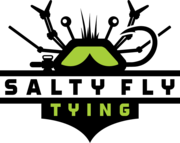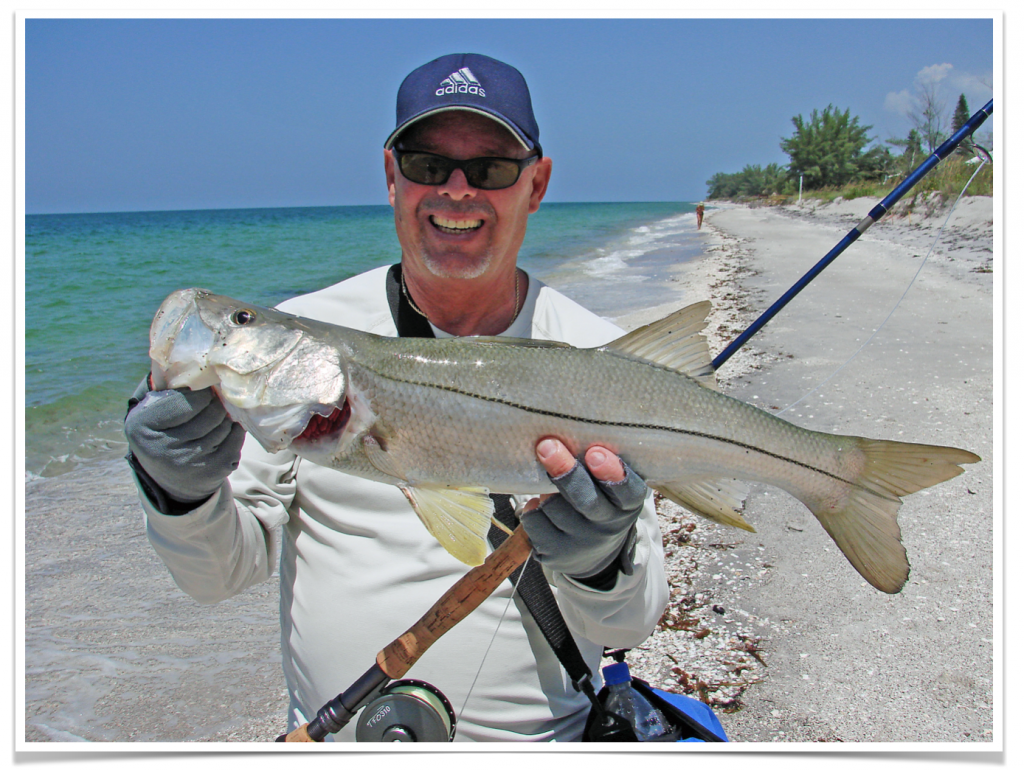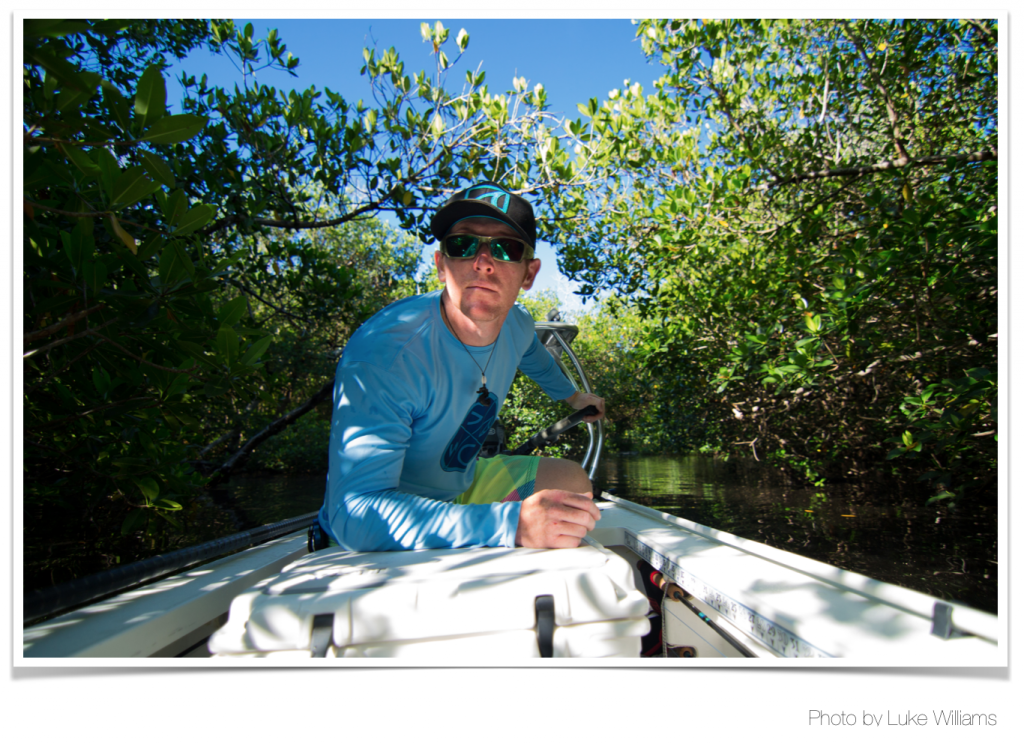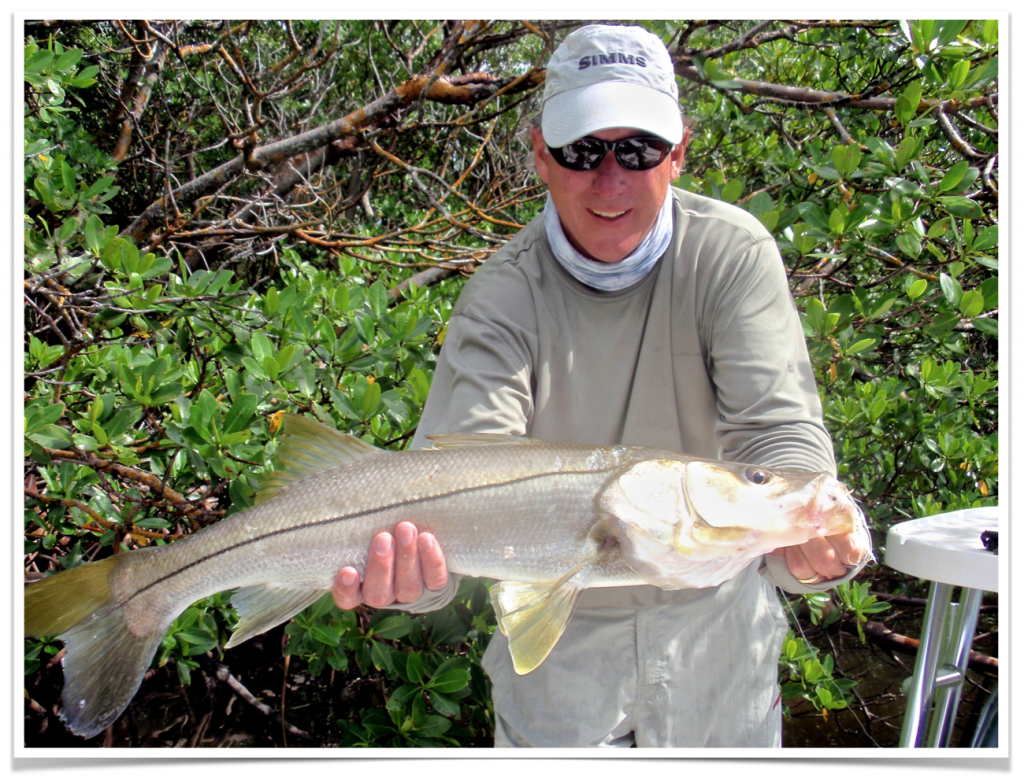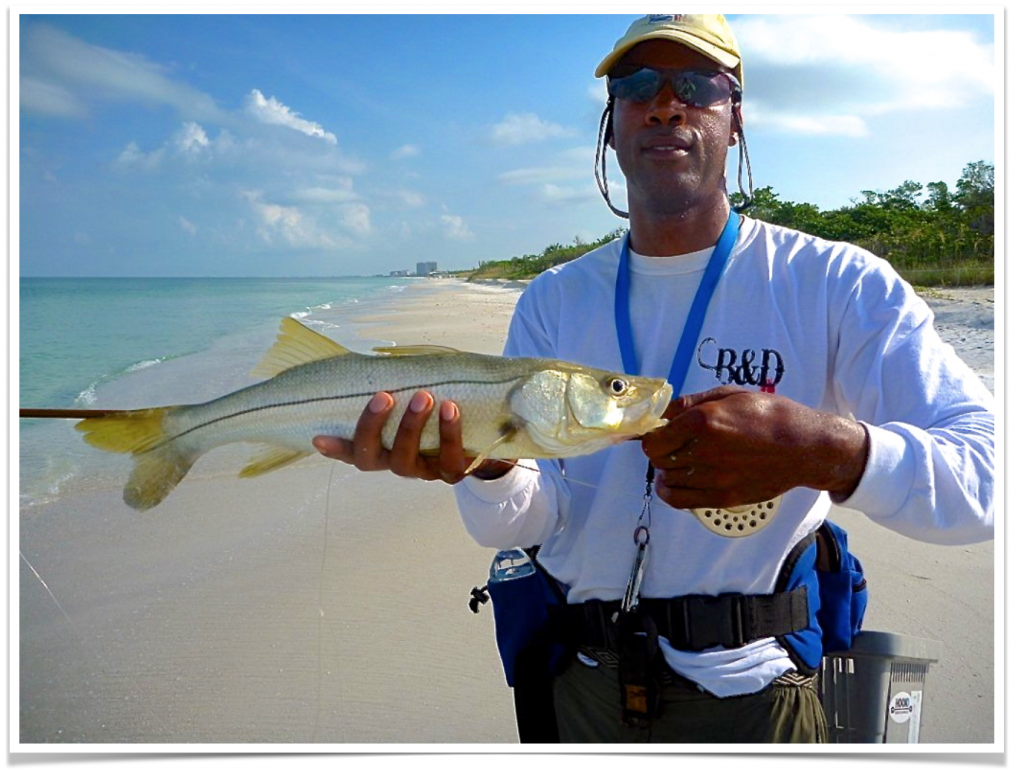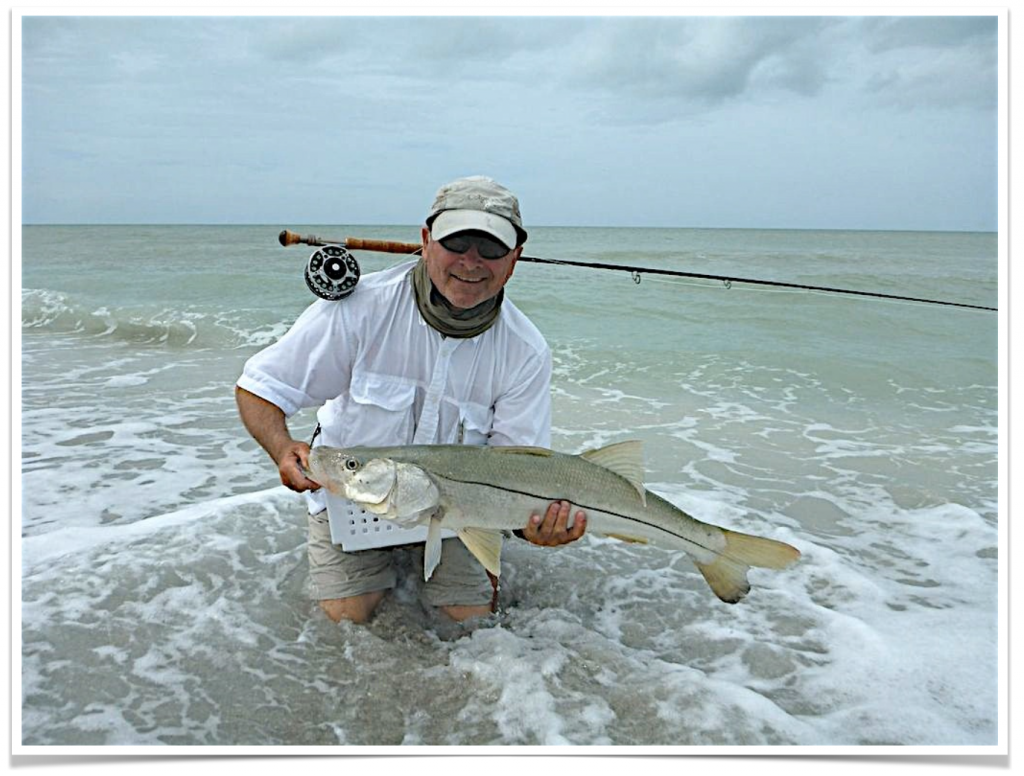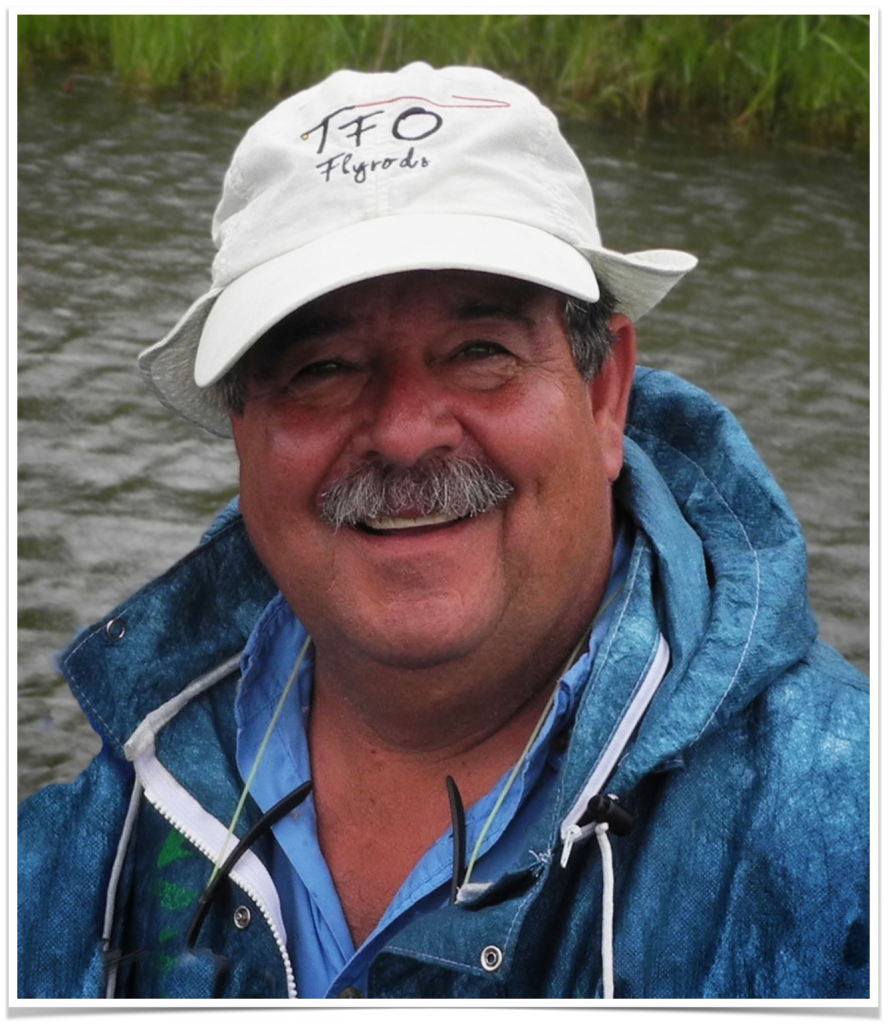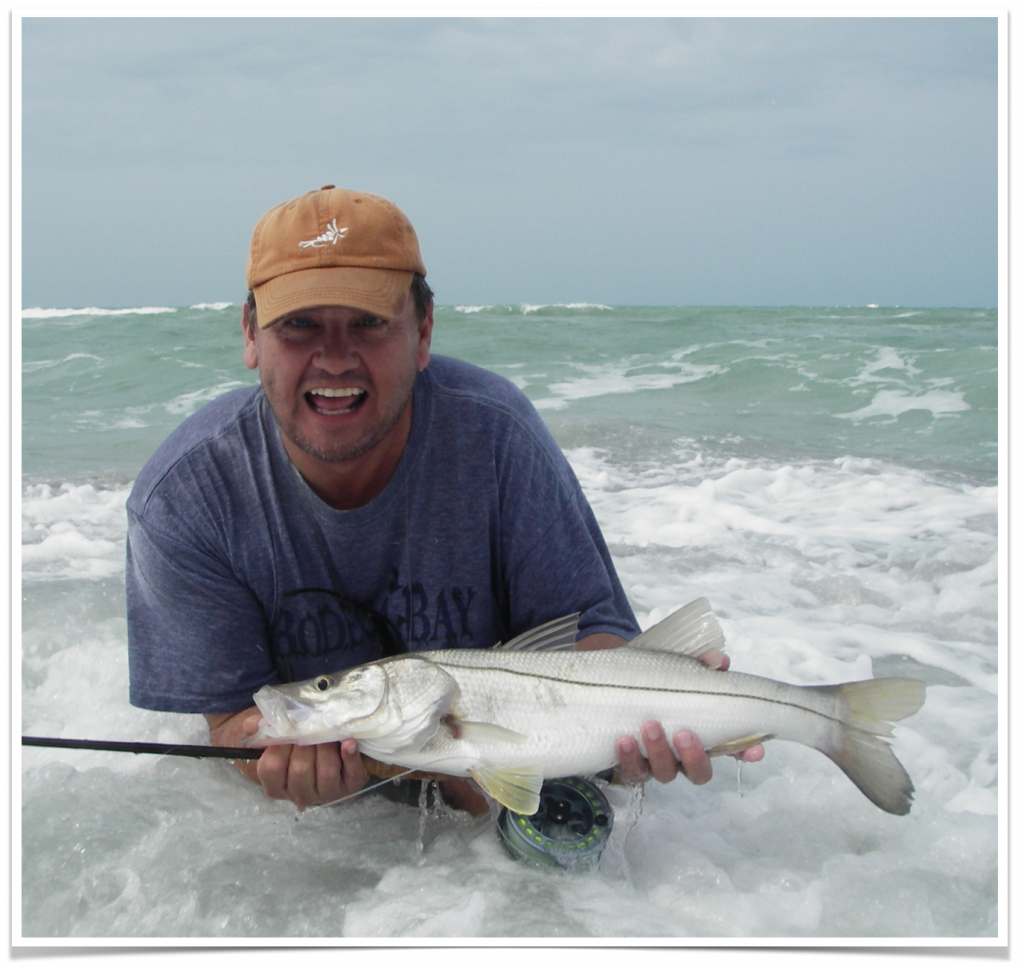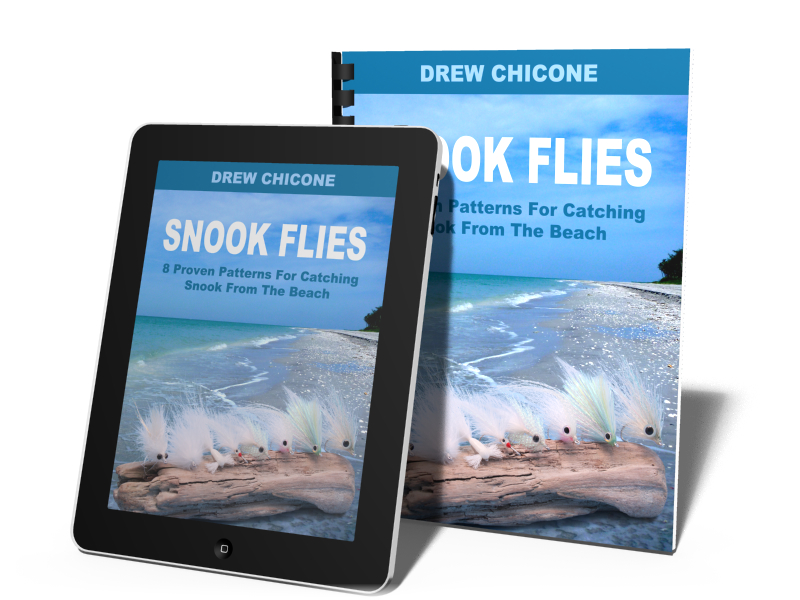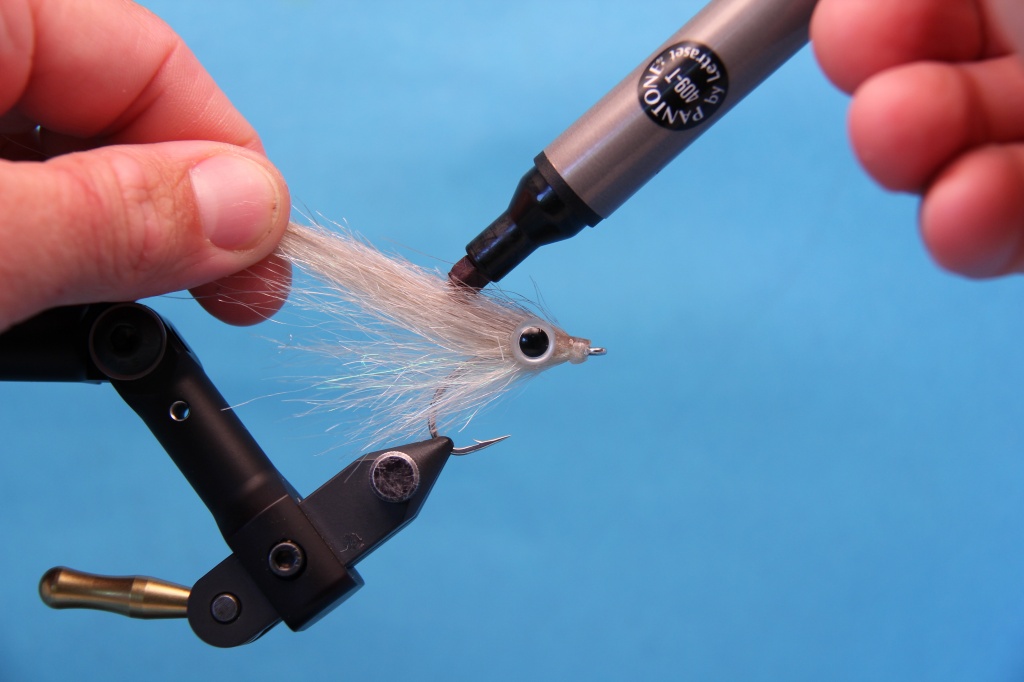Steve Gibson’s DT Special Snook Fly
I think it was about 1992-93. I received the original DT Special (I might add well used) from Capt. Matt Hoover of Naples. We had been talking about fly fishing for snook in the surf and he told me the DT would be the only fly I’d ever need. He was right. I actually “redesigned” the pattern. My fly-tying mentor, the late George Rose, always told me that there are no new flies. “They’re variations on a similar theme,” he’d say. I think he was right. Even though the surf is fairly shallow where I fish (Sarasota to Boca Grande), I believe a fly must get down quickly to the eye level of the snook. So, with that in mind, I decided to tie four neck hackles facing, rather than splaying them as per the original. The fly gets down just a little quicker. I also built up the head of the fly and added 3D Prism Eyes. I’m a big believer in eyes on a fly.
This is the sixth installment of Snook Flies. To read the rest of the interview, and for the complete step-by-step instructions for tying this snook fly and 7 more, download your copy of Snook Flies at www.saltyflytying.com.
Steve Gibson’s DT Special Snook Fly Read More »
